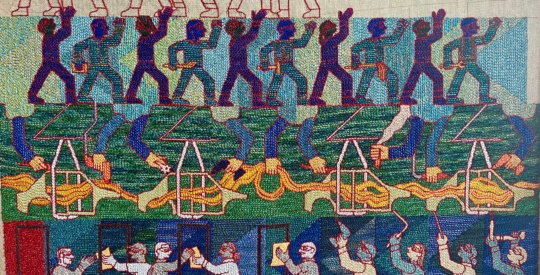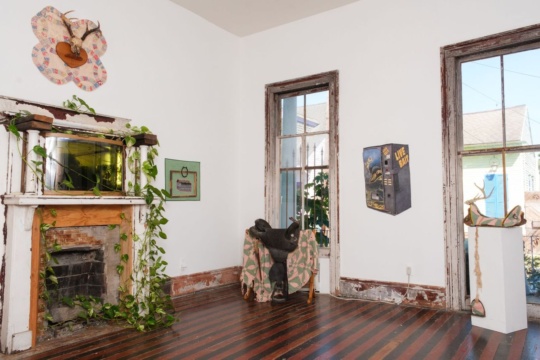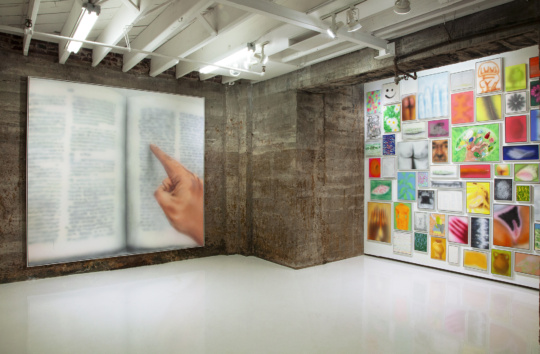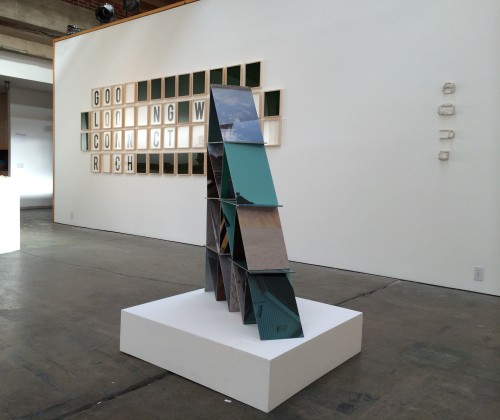
A century ago, avant-garde art dealer Daniel-Henry Kahnweiler asserted that geometry is “deeply rooted” in our processes of seeing—it gives us, he said, our “categories of vision” and constitutes the “necessary condition for all objective perception” (The Rise of Cubism, 1916). Kahnweiler’s words resonate with the viewer of “RR&P: Repetition, Rhythm and Pattern,” an exhibition of works by ten emerging and mid-career artists largely allied with reductive abstraction. All the works—from charcoal drawings to pleximounted digital prints to leaded glass to mixed media assemblages—propose a dialogue with the geometric; each represents the result of formal distillation, of visual reduction to a near-minimalist language. Kahnweiler would doubtless have approved.
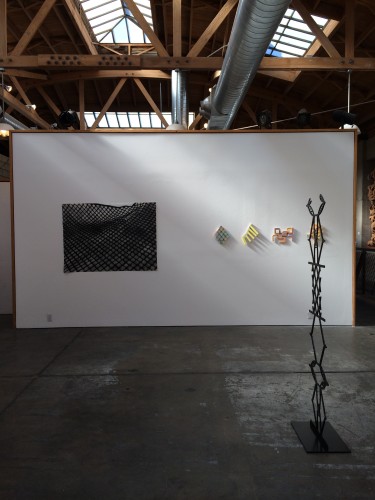
(l to r) Kim Beck, Construction Fence, charcoal on paper; Alex Paik, Prelude and Fugue, gouache, marker, colored pencil on paper; and Megan Cotts, Fig. 5, aluminum.
Yet for all their geometric rigor, these works also hint at the off-kilter, not-so-tidy unraveling of mass-produced, machine-age modes. Kim Beck’s charcoal drawings, for example, give eerie personality to commercial construction fences, while Anna Mikolay’s folded paper “paintings” respond idiosyncratically to subtle environmental changes. Lilly Zuckerman’s ceramic sculptures transform spare white lines into three-dimensional doodles, and Megan Cotts’s aluminum honeycomb structures engage details of her family history. This same interplay of geometric and organic, of regularized and uncontrolled, marks the other works in the show as well—they, too, bend their reductive visual language toward the individual, unpredictable, and ultimately quirky identity of forms, materials, and sites.
“RR&P: Repetition, Rhythm and Pattern,” curated by Lindsey Landfried, is on view through March 26 in the Lewis Art Gallery at Millsaps College in Jackson, Mississippi.
Melissa Thorson Hause is associate professor of art history at Belhaven University in Jackson, Mississippi.

